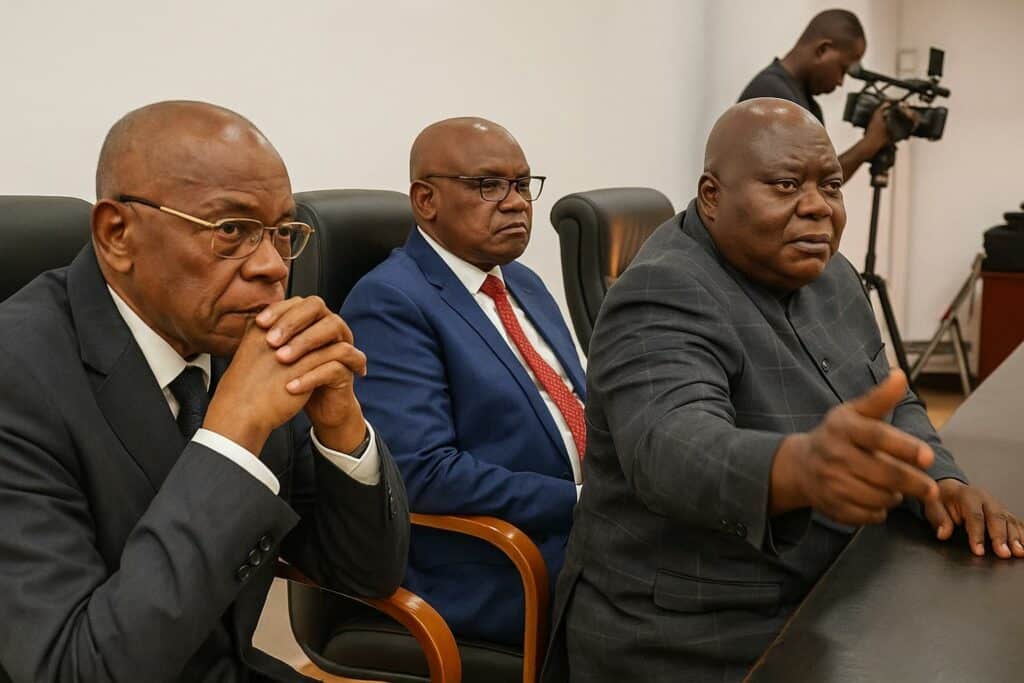Ministerial visit heralds a decisive upgrade
Standing before the shimmer of newly installed servers on 12 September 2025, Energy and Water Minister Emile Ouosso purposefully signalled that the era of improvisation in the national power utility is fading. His inspection of Énergie Électrique du Congo’s headquarters, preceded by a tightly scripted technical briefing, crystallised government resolve to align the public operator with continental benchmarks. Speaking in the amphitheatre that now houses the company’s digital archive hub, the minister placed the reform in the broader trajectory of President Denis Sassou Nguesso’s development agenda, insisting that reliable electricity undergirds industrial diversification and social inclusion.
From the SNE legacy to an integrated utility
Created in 2018 from the restructuring of the former Société Nationale d’Électricité, E2C inherited ageing assets and fragmented procedures. The transition has often been described by analysts as a struggle against “administrative archaeology”, where handwritten ledgers still compete with excel sheets for operational supremacy. Ouosso’s remarks acknowledged this legacy but framed it as a springboard: “Our past is not a handicap; it is a compass reminding us of the distance yet to be covered,” he argued, urging staff to embrace metrics-driven management and customer-centric culture.
Digital backbone: data centre and electronic archives
At the heart of the ministerial tour stood two contiguous facilities: a Tier III-compliant data centre and a climate-controlled digital archive. Engineers explained that the new server farm will consolidate billing, network supervision and predictive maintenance, reducing technical losses that the World Bank once estimated at over 30 percent of output. The adjoining archive, protected by biometric access and live-replicated off-site, allows for the electronic preservation of decades of schematics, procurement dossiers and customer files. A proprietary software suite, conceived with regional cybersecurity standards in mind, enables rapid retrieval while ensuring integrity through blockchain hashing. For Ouosso, such investments answer the dual imperative of modern governance and energy transition, offering planners the granular data required to integrate future solar and hydro projects into the national grid.
Unprecedented financing under prudent oversight
Perhaps the most striking announcement rested not on hardware but on balance-sheet oxygen. E2C, long constrained by arrears and limited self-financing, has secured fresh capital lines described by the minister as “the most significant since the company’s inception”. Although figures remain confidential pending parliamentary notification, treasury sources suggest a blend of concessional loans and climate-labelled bonds arranged with multilateral partners. Ouosso insisted that every franc released would be tracked against performance indicators, echoing provisions of the 2024 Public Finance Modernisation Act. The pledge resonates with investors attentive to governance risks across Central Africa and positions Brazzaville as a credible candidate for green-energy co-financing.
Workforce mobilisation and service culture
Addressing engineers, archivists and meter technicians, Director-General Jean Bruno Danga Adou warned that inertia is no longer an option. Mandatory upskilling programmes, beginning with digital literacy modules, will be rolled out across the enterprise. Employees reluctant to transition to the paperless ecosystem were told that resistance would be interpreted as a refusal to serve the public interest. Yet the discourse remained inclusive: performance bonuses will reward teams that cut outage frequency and improve collection rates, a gesture welcomed by union representatives present in the hall. By anchoring reform in professional conscience rather than administrative fiat, management hopes to cultivate the sense of ownership required for lasting change.
Broader stakes for Congo’s growth trajectory
Reliable electricity is more than a corporate objective; it is the sinew binding Congo-Brazzaville’s emerging industrial parks, specialised agri-business zones and digital startups to regional markets. The African Development Bank estimates that a single percentage point gain in electrification can lift GDP growth by up to 0.2 points in resource-dependent economies. Hence, E2C’s modernisation is likely to reverberate beyond urban grids, fostering rural electrification schemes and off-grid innovations. As Brazzaville prepares to chair the next CEMAC energy ministers’ conclave, the demonstration effect of an operational data centre and transparent financing could strengthen Congo’s diplomatic standing while offering a replicable model for neighbouring utilities seeking similar upgrades.
Key takeaways
E2C’s transformation is accelerating, propelled by ministerial oversight, digital infrastructure and unprecedented funding. The convergence of technology, governance and human capital marks a strategic inflection point for Congo’s power sector, one that aligns with national ambitions without overlooking the pragmatic constraints of legacy systems. If execution matches the declared intent, the journey out of archaïsme may well illuminate the path toward a resilient, inclusive and competitive energy future for the Republic of Congo.

